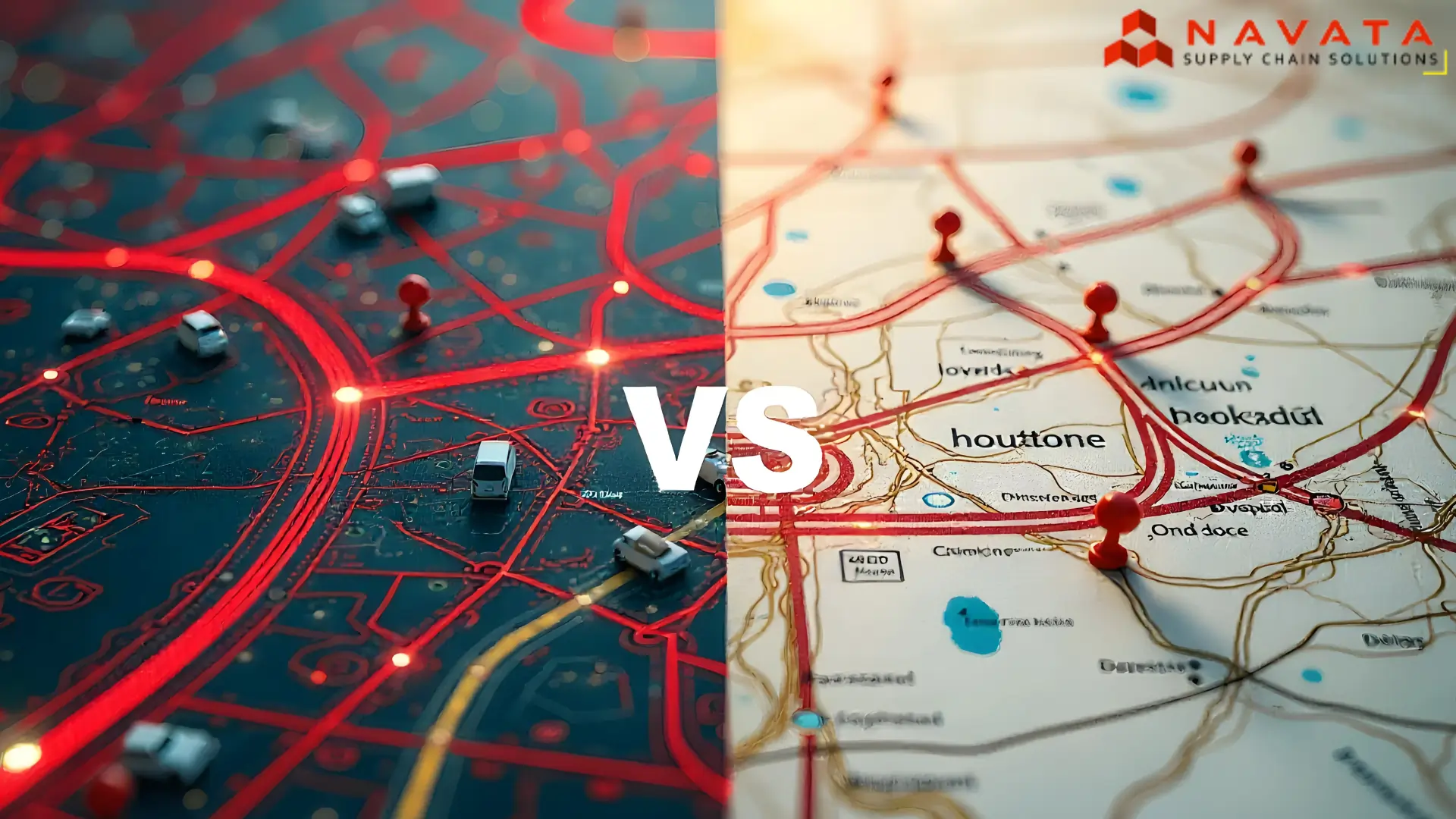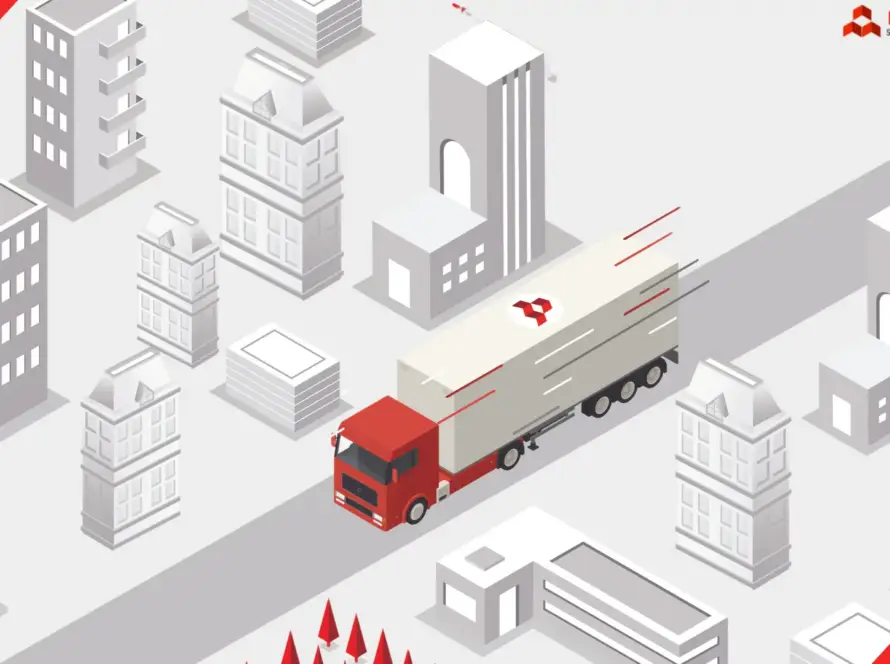AI Route Optimization vs Traditional Routing
In last-mile logistics, the question is no longer whether technology can improve routing — it’s how leaders choose between traditional planning methods and AI-driven optimization to safeguard profitability and competitiveness. With last-mile costs making up over half of total shipping expenses, even small inefficiencies compound into significant margin erosion.
For top management, this decision goes beyond route planning. It’s about scalability, customer experience, and long-term ROI. While traditional routing offers simplicity and low upfront cost, AI-powered optimization transforms logistics into a strategic asset, aligning cost control with growth ambitions.
Want to unlock smarter deliveries? Discover our guide on Effective Route Optimization Strategies and see how top companies cut costs while delighting customers

You May Also Like to Read: Power of Data and Analytics in Supply Chain Management
What Is Traditional Routing and Where Does It Work Best?
Traditional routing relies on static maps, manual planning, and human judgment.
- Advantages: Simple to implement, low upfront cost, effective for predictable routes.
- Limitations: Limited scalability, vulnerable to traffic changes, prone to human error.
Best Fit: Small to mid-sized businesses with stable delivery patterns and minimal daily route variability.
How AI Route Optimization Transforms Last-Mile Operations
AI route optimization uses real-time data—traffic, weather, delivery density, and predictive analytics—to dynamically calculate routes.
Advantages:
- Cuts fuel consumption by 15–20%.
- Reduces delivery times by up to 25%.
- Improves fleet productivity and route accuracy.
- Provides live ETAs and enhanced customer communication.
Best Fit: High-volume urban delivery networks, e-commerce, and scaling logistics providers.
Optimize Your Supply Chain with Experts!
Cost-Benefit Analysis: AI Route Optimization vs Traditional Routing
Factor | Traditional Routing | AI Route Optimization |
Upfront Investment | Low (manual processes) | Higher (software, integration) |
Operational Costs | Higher (fuel, labor inefficiency) | Lower (optimized fuel use, better utilization) |
Scalability | Limited to small fleets | Easily scalable across geographies |
Accuracy | Prone to errors | Data-driven, real-time recalculation |
Customer Experience | Average | Real-time ETAs, higher satisfaction |
ROI Timeline | Immediate but plateaus | Payback in 12–18 months |
For a detailed breakdown of advantages, check out our blog on the Benefits of Route Optimization Software.
ROI and Strategic Value for Logistics Leaders
- Traditional Routing
Quick to adopt, but operational inefficiencies increase with scale. ROI stagnates when networks expand.
- AI Route Optimization
Requires upfront investment but reduces per-delivery cost, ensures SLA compliance, and enables long-term scalability.
👉 For top-level managers, the real ROI lies beyond cost savings—it’s in customer retention, service reliability, and strategic growth capacity.
Risks, Flexibility, and Operational Impact
Traditional Routing Risks: Reliance on driver familiarity, exposure to traffic delays, and limited adaptability.
AI Routing Advantages: Real-time rerouting, predictive demand planning, and integration with TMS/WMS platforms.
Executive View: Traditional routing is tactical; AI route optimization is strategic.

Final Answer: AI Route Optimization vs Traditional Routing
For supply chain executives, transportation heads, and logistics managers, the choice of AI Route Optimization vs. Traditional Routing comes down to scale, efficiency, and long-term competitiveness.
If your fleet is small, predictable, and local → Traditional routing remains cost-effective.
If you operate in high-density markets, manage complex fleets, or compete on customer experience → AI route optimization is the only sustainable strategy.
👉 The bottom line: AI route optimization delivers the superior cost-benefit ratio, transforming last-mile logistics from a cost center into a growth driver.
Thanks For Reading: AI Route Optimization vs Traditional Routing: Cost-Benefit Analysis for Last-Mile Logistics
Powered By 360Presence
FAQ’s
1. What is the key difference between AI route optimization vs. traditional routing?
Traditional routing relies on static planning, while AI dynamically adjusts routes based on traffic, weather, and delivery demand.
2. Is AI route optimization always more cost-effective?
Not immediately. It has higher setup costs but pays off within 12–18 months through reduced operational expenses.
3. Can small logistics companies still use traditional routing?
Yes. For smaller fleets with predictable routes, traditional routing is still economical and effective.
4. How does AI routing improve customer satisfaction?
By providing real-time ETAs, accurate delivery windows, and proactive notifications, AI significantly improves the customer experience.
5. Should companies adopt a hybrid model?
Yes. Many companies use traditional routing for rural/low-density deliveries and AI optimization for urban or high-volume networks.

